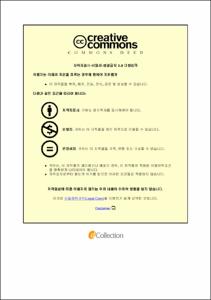Thin-solid block and diced cartilages: the best option for dorsal augmentation using costal cartilage (an experimental study in rabbits)
- Abstract
- Objectives. Costal cartilage is commonly used as a dorsal implant in Asian rhinoplasty. To achieve better outcomes, it is important to know which types of costal cartilage are most appropriate for dorsal augmentation. Therefore, this study aimed to investigate how various forms of costal cartilage affect the surrounding tissues and their resorption over time, as well as their clinical appearance, using histomorphological analysis.
Methods. Cartilage samples were collected from the anterior chest wall of 10 rabbits. Four forms of cartilage, i.e., 2-mm solid block, 1-mm solid block, diced, and crushed, were prepared and inserted into the subcutaneous tissue pockets of the nasal dorsum of each rabbit. The animals were sacrificed three and six months later, and graft specimens were examined histomorphologically using hematoxylin–eosin staining and Masson trichrome staining.
Results. Histomorphological analysis revealed various important findings of the cartilage and surrounding tissues according to the different types of costal cartilage. The thick cartilages exhibited decreased thickness compared with the thin cartilages over time (p = 0.038). Additionally, the thick cartilages showed a lower degree of vascularization than the thin cartilages at 3months (p < 0.001). A comparison of the cartilage forms revealed that the diced cartilages had better chondrocyte survival than the solid block cartilages (p < 0.001). Fat tissues were prominently observed surrounding the diced cartilages at 3 months (p = 0.01), and fibrosis was more prominently observed in the crushed cartilage than in the other types of cartilages (p = 0.04 and p = 0.005 at 3 and 6 months, respectively).
Conclusions. This study revealed differences in resorption depending on the thickness of the costal cartilage in rabbits for the first time. Among the various forms of costal cartilages, diced cartilage and thin solid block cartilage showed favorable outcomes of chondrocyte viability and growth compared with the other forms. These findings may help select the optimal type of costal cartilage for dorsal augmentation in rhinoplasty.
- Issued Date
- 2022
- Awarded Date
- 2022-02
- Type
- dissertation
- Keyword
- Rhinoplasty; Costal cartilage; Diced cartilage; Resorption; Thickness; Viability
- Alternative Author(s)
- Kim, Sung Hee
- Affiliation
- 울산대학교
- Department
- 일반대학원 의학과의학전공
- Advisor
- 장용주
- Degree
- Doctor
- Publisher
- 울산대학교 일반대학원 의학과의학전공
- Language
- eng
- Rights
- 울산대학교 논문은 저작권에 의해 보호 받습니다.
- Appears in Collections:
- Medicine > 2. Theses (Ph.D)
- 파일 목록
-
-
Download
 200000594268.pdf
기타 데이터 / 11.58 MB / Adobe PDF
200000594268.pdf
기타 데이터 / 11.58 MB / Adobe PDF
-
Items in Repository are protected by copyright, with all rights reserved, unless otherwise indicated.